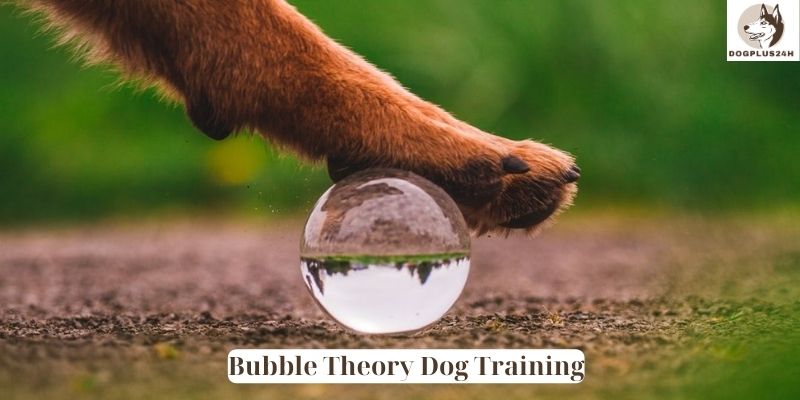How to train reactive dogs? The community of dog owners has recently been more interested in this subject. I therefore made the decision to thoroughly research it to see whether it is a workable method. So continue reading to learn everything with Dogplus24h.com for you to know about Bubble Theory Dog Training if it’s the best choice for your dog.
What is Bubble Theory Dog Training?
The bubble idea is a relatively new approach to dog training. In fact, adopting this strategy has grown to be more of a recent fad among dog owners. The technique still has value despite being novel.
It comes from a school of thought that holds that dogs learn best in a laid-back setting. Sadly, there won’t be any genuine bubbles in this laid-back environment. When I first started exploring the top, this knowledge was quite heartbreaking to me.
In any case, the “bubble” that you surround your dog when teaching him is essential to the Bubble Theory Dog Training. It resembles what most people think of as a safe area. Dogs will be much better able to remember anything you’re teaching them to accomplish in this zone.
Of course, each dog has a personal safe space. In order to promote a friendlier training environment, this notion relies on an owner entering the space. It’s the reason why folks have used this approach to train reactive dogs (we’ll talk about them later).
In comparison to other dogs, reactive dogs will have a significantly greater personal space bubble. It serves as their defense against anything that can frighten or worry them. Dogs that are self-assured will typically have a considerably smaller one.
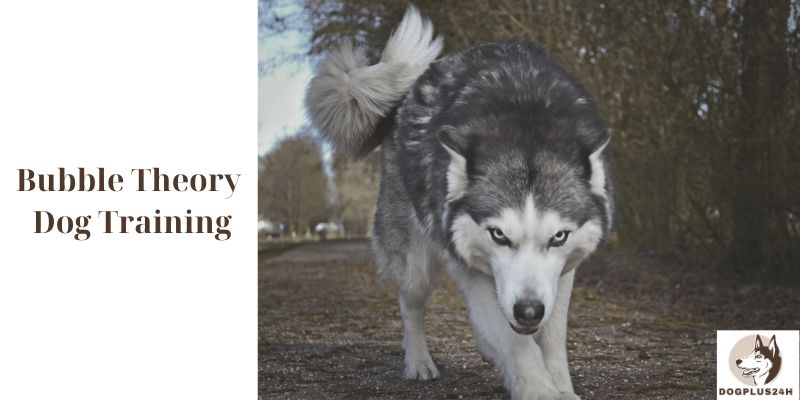
What is a Reactive dog? Keep their personal space private.
Dogs have a keen understanding of their surroundings from birth. They are extremely sensitive to other canines or people entering their area, just like humans are. Your dog may perceive people in their territory as either reassuring or frightening depending on the situation. Other dogs are instinctively aware of this barrier. The going is harder for people.
The degree to which a dog reacts to a person or another dog invading its personal space relies greatly on their relationship. Imagine addressing your parents or kids in the same manner. You’d want to give them a quick embrace and kiss. You would be terrified if a stranger did that to you, though.
The relationship may still exist, but the bubble space may be very different. While some dogs might relish being held so close to your face, others could find it uncomfortable. Every dog requires a unique approach. The safety bubble effect is especially pronounced in reactive and scared dogs. When it comes to personal space, these creatures will be the most sensitive, therefore we will need to tread gently.
The Advantages of Bubble Theory Dog Training
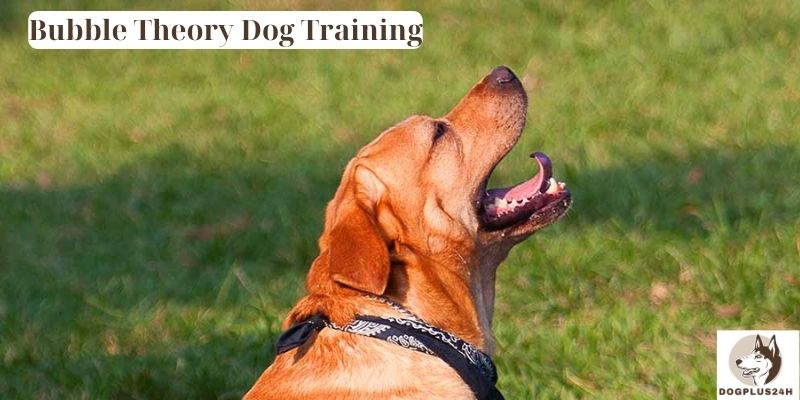
Bubble Theory Dog Training wouldn’t be worthwhile if it didn’t yield certain advantages. So without further ado, let’s investigate why people are beginning to respect this training approach:
- Fosters a calm learning environment: Stress and anxiety are the two things that prevent dogs from remembering what they are being taught during training. By creating a tranquil and secure environment, bubble theory can lessen their impact on your dog.
- Gaining your dog’s attention Your dog won’t be distracted by outside factors if you put them inside their personal space bubble. In a manner, you’re covering their eyes to make sure they’re paying attention to the lesson.
- Strengthens the owner-dog relationship: The absence of outside distractions enables owners to receive more attention, which strengthens their bond.
How to train a reactive dog using Bubble Theory Dog Training?
It’s not difficult to train reactive dogs using the Bubble Theory Dog Training. The next five phases are actually all that are needed for the full process to help control those reactionary inclinations.
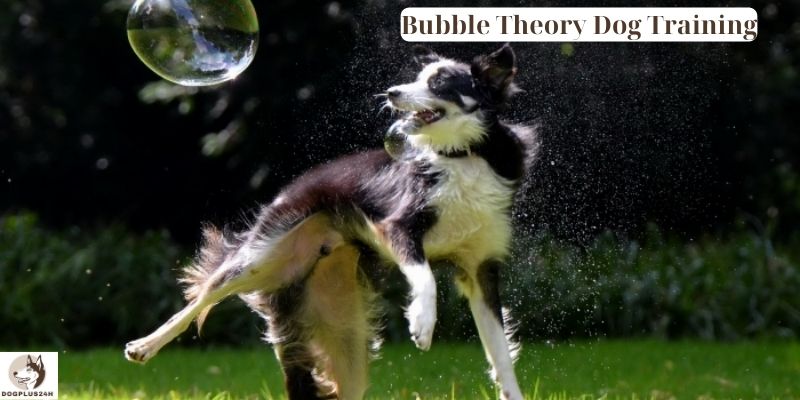
Step 1: Snort your dog’s bubble.
Getting your dog used to having you in their space is the first step. It is also important to establish their comfort level with you being a few feet away from them in this section. But it’s crucial to hold back while dealing with a hyperactive dog.
Therefore, avoid approaching them directly and simply standing there. They’ll just react negatively, which would be the complete opposite of what this training was intended to do. Instead, this action must be completed slowly and steadily.
Some aggressive dogs won’t first handle your presence well. It frequently occurs in dogs who have undergone trauma, such as rescue dogs. When this occurs, owners should approach their pets as closely as they can while still keeping them comfortable.
With a little time and persistence, the bubble will ultimately begin to contract. After that, you can start getting closer without your dog reacting.
Step 2: Train in the bubble space.
The training might begin after getting comfortable in the 2- to 3-foot bubble. You should enter the room, approach your dog’s face, and look them in the eyes. Dogs will make an effort to turn their heads away from you. But it’s important to persuade them to look at you in the eyes. A connection and power dynamic between you two will be shaped by this process.
Additionally, you should collect some treats to give your dog anytime eye contact is made. This method promotes eye contact as desirable behavior through the use of positive reinforcement. It’s much simpler to teach them commands after it’s installed.
Step 3: Expand your dog’s bubble.
It’s time to expand the little Bubble Theory Dog Training if your dog is comfortable with it. This action will increase their comfort level and halt such reactionary behaviors. Increase the distance inside this bubble while maintaining strong eye contact. But once more, go slowly to prevent your dog from regressing.
When teaching complex commands and behaviors, the distance that has been created will be crucial. Additionally, your dog has to learn how to flourish both inside and outside of their current comfort zone. Therefore, expanding the bubble’s radius will aid in developing that comfort.
In the interim, I would begin to invade your dog’s personal space with other dogs and people. But do so gradually, keeping in mind how comfortable your dog is with them. Naturally, you’ll also need to make sure that these new features don’t significantly take up space.
Step 4: Recognize the limitations of your dog.
Humans frequently need to understand that dog training has its limitations. Despite your best efforts and years of training, some dogs will still respond to other animals. So, at some point throughout these sessions, it’s crucial to understand your dog’s limitations.
Overall, being able to relax your dog is a crucial step in this process. Then, you may make sure that the reactive events go place without any problems. If you master that, everything else taught in Bubble Theory Dog Training is just gravy.
Step 5: Enjoy the bond created by the process
Simply appreciating your newfound friendship with your dog is what this final phase entails. Having training sessions with my dogs is one of my favorite things to do. I predict that using this Bubble Theory Dog Training technique will make you feel the same way.
Tools & Equipment for Training
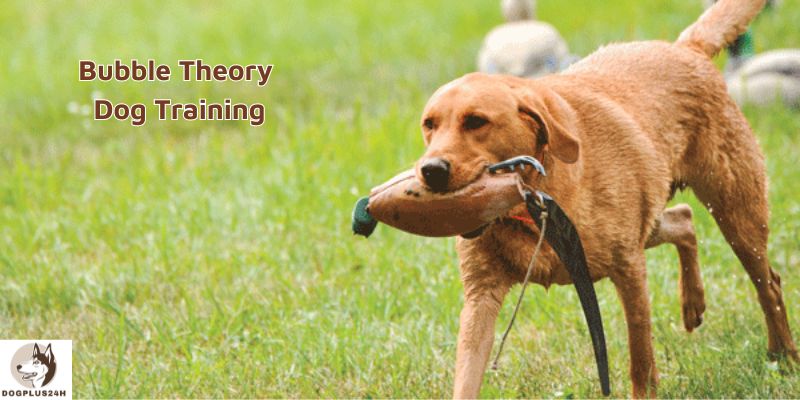
The effectiveness of the training sessions is increased by the use of a variety of instruments and equipment in Bubble Theory training. In addition to aiding in reinforcing desired behaviors, these tools also serve to create a fun and enjoyable environment for the dog and the trainer.
1. Treat Pouches
Treat bags are a crucial item to have on hand when giving out prizes during training. They make it simple to get treats, allowing you to swiftly thank your dog for good behavior.
Maintaining a tidy and organized training environment is also made easier by having a designated pouch for goodies.
2. Clickers
In positive reinforcement training, such as Bubble Theory, clickers are a common instrument. The precise instant a dog exhibits a desired behavior, followed by a treat or reward, is marked by the clicker.
The clicker’s constant sound makes it easier for dogs to understand the relationship between their behaviors and the reward, which improves the effectiveness of training.
3. Appropriate Leashes
For Bubble Theory training, picking the right leash is essential. A good leash should allow for effective control and communication while also being comfortable for the trainer and the dog.
Depending on the dog’s size, breed, and behavior, some trainers might suggest particular leashes, such as a six-foot conventional leash or a front-clip harness.
4. Extra Training Resources
- Target Sticks: These can be used to direct your dog’s movement or posture while you are training them, making it easier for them to pick up new behaviors and orders.
- Training Mats: Dogs can learn when to concentrate on learning when a certain mat or location is designated for training.
- Long Lines: Using a long line during training sessions can add more safety and control while practicing recalls and off-leash training.
FAQs about Bubble Theory Dog training:
1. Why Does the Bubble Theory Work?
Dogs are motivated by movement and energy, according to the Bubble Theory of Dog Training. You can make teaching your dog new instructions interesting and successful by including these two components in your training procedures. Dogs learn best when they receive consistent rewards, which is the foundation of the bubble theory. These training techniques emphasize praising your dog for appropriate behavior while steering him or her away from undesirable tendencies. Dog training using the bubble theory is a successful method for teaching your dog new skills and improving upon existing ones.
2. How Can I Begin Training My Dog Using the Bubble Theory?
Reading the Bubble Theory Dog Training Manual is the first thing you should do if you want to start with Bubble Theory Dog Training. You will learn everything you need to know about bubble theory and how to surround yourself and your dog with a Bubble of Peace in this booklet. After reading the instruction manual, you’ll be prepared to begin utilizing Bubble Theory to train your dog.
3. What Are The Best Tips And Techniques For Training A Dog Using The Bubble Theory?
The following are some of the best advice and methods for teaching dogs using the bubble theory:
- Give your dog some room.
- Look for indications of stress in dogs.
- Keep your eyes in contact.
- Given that food motivates dogs, employing treats as a training method is quite successful.
- Start with simple cues like “sit” and “stay” before progressing to more challenging cues.
- Be consistent in your training methods since dogs require routine and structure.
- Reward your dog for appropriate conduct, but don’t penalize them when they misbehave.
- Be patient and continue training until your dog is adept at the trick.
- Back up if your dog becomes stressed. Maintain eye contact, approach carefully, and speak to your dog while soothing him with your voice and goodies.
Summary of Bubble Theory Dog training
The bubble theory, which links the dog’s internal emotional state to the vicinity of their trigger, is an effective approach to thinking about counter-conditioning. Knowing how important their personal safety bubble is to our dogs helps us avoid using counter-training too quickly or too forcefully.
Before you start a training program for any complicated behavior issue, such as reactivity and fear-based aggressiveness, it is usually a good idea to have your veterinarian rule out any underlying medical conditions like discomfort. If you’re having trouble, a skilled force-free behaviorist who can come to your home and see your dog in person can be of assistance. Your veterinarian can direct you to qualified behaviorists in your region.
If you give this dog training method a shot, please let us know how it goes in the comments section below! What kind of experiences have you had? Would you advocate it to others?

